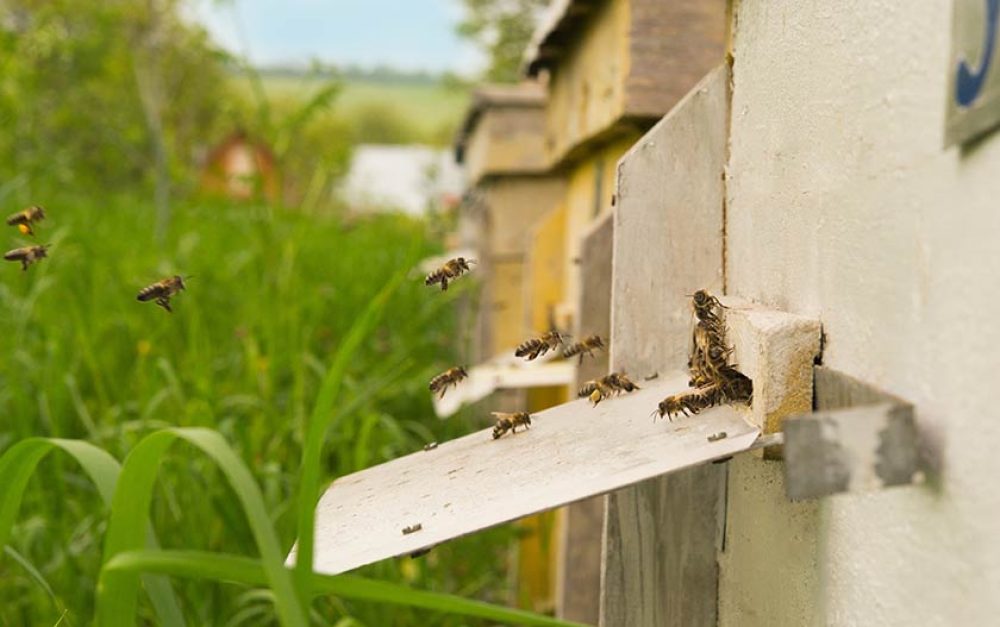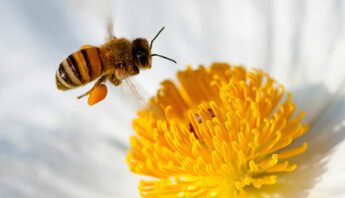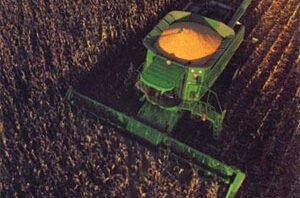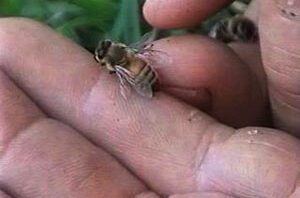EPA’s proposed new protections for bees fall short. EPA’s new rule has made headlines. After years of pressure from PAN and our partners for federal decisionmakers to take the bee crisis seriously, it’s good to see EPA acknowledge the pesticide problem. But EPA’s proposed new rule is remarkably short on meaningful action.
Last month, on the heels of the rollout of the White House’s plan to protect honey bees and other pollinators, EPA announced its own piece of the plan: a new rule that would limit the use of some bee-harming pesticides when honey bee colonies are contracted for pollination.
EPA’s new rule has made headlines. After years of pressure from PAN and our partners for federal decisionmakers to take the bee crisis seriously, it’s good to see EPA acknowledge the pesticide problem. But EPA’s proposed new rule is remarkably short on meaningful action.
What’s in the rule?
Bees need your help
Tell EPA that neonic-treated seeds are bad news for bees and must be addressed directly. 
As part of EPA’s proposed new rule, the agency released a list of pesticides of concern for honey bee health — including neonicotinoids and bad actors, chlorpyrifos and endosulfan. It’s good news that EPA is calling out a broad array of chemicals for their impacts on honey bees. The use of these products will be restricted whenever honey bees are under contract to pollinate a crop. For example, if an almond grower has contracted with a beekeeper to bring hives to California during the almond bloom, that grower can’t apply certain bee-harming pesticides while the bees are foraging.
However, the new rule applies only to foliar applications — that is, pesticides sprayed directly onto the plant — and doesn’t restrict other pesticide applications like soil drenches and seed coatings. And it only covers pesticide uses while plants are in bloom.
When honey bee colonies have been placed in the midst of a blooming crop in order to pollinate that crop, it’s common sense that the flowering plants shouldn’t be doused in bee-harming pesticides. In fact, it’s so common-sense that it was already written into EPA’s policy: many of the pesticides that are on the list already had label restrictions, instructing applicators not to use them while bees are foraging.
The rule made one important, substantive change: closing a loophole that allowed for the use of neonicotinoids on blooming crops, as long as beekeepers were given 48-hour notice that the application was coming. Now neonics are off the table when bees are under contract.
But at the end of the day, EPA has gotten a whole lot of kudos for re-announcing label restrictions that were already in place.
The trouble with seed coatings
Taking a look at agriculture in the Midwest, where the most common crops don’t rely on bees for pollination, the loopholes in EPA’s proposal start to look even more glaring.
The most common use of neonics is as a seed coating: a layer of pesticide applied to the outside of a corn, soybean, cotton or canola seed before it goes into the ground. Under EPA’s new rule, at least 100 million acres of corn and soybeans across the Midwest will continue to be pre-treated with neonicotinoids, regardless of whether bees are in the area or not.
EPA has gotten a whole lot of kudos for re-announcing label restrictions that were already in place.
Why is this a problem? First, just because corn and soybean farmers don’t contract with beekeepers for pollination services doesn’t mean that bees aren’t nearby when pesticides are applied. Sixty-five percent of the honey bees in the nation spend their summers in the Midwest, which means they’re exposed to pesticides used in corn and soybean production. EPA’s new rule won’t do anything to restrict bee-harming pesticide use in these crops.
And corn and soybeans really are a major route of exposure to neonics for bees. When neonic-coated seeds are planted, only 2-20% of the pesticide is absorbed into the plant, while the rest washes into the soil, water and air. A study released in May found that honey bee colonies kept near neonic-treated cornfields had higher rates of infection from common honey bee pathogens. And large bee die-offs during planting season remain a serious issue, as planting equipment kicks neonic-laced dust into the air and onto nearby flowering plants as coated seeds are injected into the soil.
Loopholes galore
These aren’t the only holes in EPA’s plan. The agency proposed changes to protect some of the bees, some of the time. Honey bees regularly forage two miles from their hives. But nothing in EPA’s rule will prevent a grower from applying bee-harming pesticides if there are honey bees just across the property line on a neighboring farm.
And then there are the hundreds of pollinators who aren’t under contract for anyone. Wild bees and other pollinating insects are on the landscape year-round. They provide critical ecosystem services — and may be more susceptible to the harms of neonicotinoids than honeybees. But since wild pollinators are not under contract, they’re not protected under the new rule.
EPA is past due on tackling the role that pesticides play in bee decline. The agency’s recent pledge not to register new neonicotinoid products was a step in the right direction. This new rule may be another, although it doesn’t promise much beyond better enforcement of existing labels. But the progress can’t stop here. Bees need protection from pesticides, and neonicotinoid seed coatings are a critical component of the problem.








